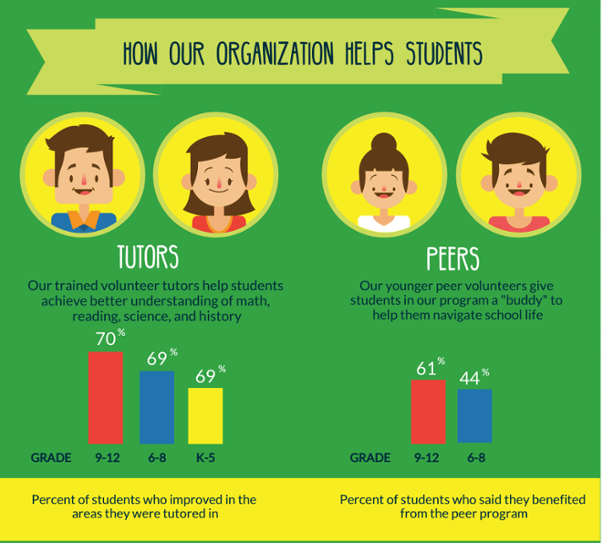The importance of measuring impact
Most nonprofits are familiar with the idea of transparency and accountability — after all, registered 501(c)(3) nonprofits are required to share their financial status with the public. But the accountability expectation has expanded within the nonprofit world in the last several years to include the idea of “impact,” a phrase that all nonprofits are surely well-acquainted with. Impact can be defined in a lot of ways, but for the purpose of this blog we’re going to use a definition found in the 2017 book Generation Impact: How Next Gen Donors are Revolutionizing Giving: demonstrated outcomes that have made a measurable difference for a nonprofit and those they serve. Essentially, impact accountability is the idea of sharing how your nonprofit is actually delivering on its mission and making a difference.
We know that donors and other key audiences want to see that their contribution — be it financial, in-kind, or through volunteer hours — has a positive, measurable impact. In Generation Impact, 300 major donors in their 20’s and 30’s were surveyed. The participants ranked “seeing that my contribution makes a real difference and the organization has real impact” as one of their top three reasons for giving. Further demonstrating the endurance of a desire for impact accountability over time, Guidestar, a nonprofit reporting service, and Hope Consulting found in a 2011 study that 4,500 of 5,000 donors said they would “support high-impact nonprofits if they could readily find information on the organizations’ effectiveness”, and, accordingly, Guidestar decided to add an “Impact” tab to their nonprofit reporting structure.
For some nonprofits, measuring impact is easier said than done. There is currently no standard, across-the-board framework for assessing a nonprofit’s impact, and creating a standardized model would be difficult to do, as all nonprofits have unique missions, serve different constituents, and engage in distinct activities. Creating your own method for measuring impact accountability requires thought, resources, and long-term evaluation and re-evaluation. The exercise, however, is well worth your nonprofit’s investment and once you’ve determined an impact reporting framework, you’ll likely only need to update your reporting annually. There are several helpful guides and processes out there that can assist nonprofits in effectively measuring impact, including one common approach, the theory of change model, which is centered around quantifying a nonprofit’s inputs, activities, outcomes, and lastly, impact.
Two common types of outputs gathered in impact reporting are statistics and stories. Unsurprisingly, statistics appeal to reason by proving through hard numbers the difference your nonprofit is making. You can also leverage emotional appeal by utilizing stories that share the perspective of the people your nonprofit services and how your work has changed their lives.
Impact accountability and your nonprofit marketing strategy
Now, how should you utilize your impact statistics and stories in your marketing and communications efforts? After all, metrics won’t make a difference in donations or awareness unless they are shared!
Armed with proof points, you can now create a powerful nonprofit marketing strategy to reach current and potential donors — as well as community partners, volunteers, foundations, and even those you serve.
Here are just a few ideas of how your nonprofit can leverage impact reporting in communications efforts (remember to keep your target audience’s preferences and your organization’s goals in mind as you create and execute your strategy):
- Promote statistics and stories on your nonprofit’s website homepage, or a separate “Impact” tab.
- Create infographics, which can be used on multiple platforms.
- Include impact metrics in your organization’s newsletter.
- Create videos with testimonials from those you serve, as well as donors and volunteers. Share these videos wherever your nonprofit engages.
- Incorporate impact metrics into executive speaking engagements, as well as fundraising events.
- Use statistics periodically in your nonprofit’s blog.
- Include impact metrics in thank-you letters and email correspondence.
- Create a social media campaign centered around one individual’s story, unfolding key moments over time.
- Pitch stories of impact to local reporters to land media coverage.
- Include statistics and stories in volunteer materials, like handbooks and fact sheets.


Two great examples of how to use an infographic to share impact, courtesy of Guidestar.
Using impact accountability as a tool in your nonprofit marketing toolbox will give your communications channels a sense of validity and transparency while showing your audiences what they want to see: the positive change your nonprofit work is driving.
Do you need help gathering impact metrics, conducting audience research, or determining the appropriate channel strategy for your nonprofit? Contact us today to learn more about how we can use integrated communications to help your nonprofit achieve its goals.
